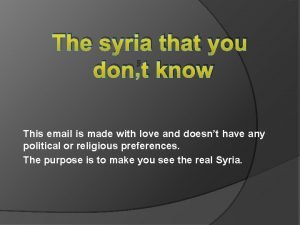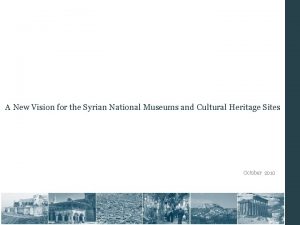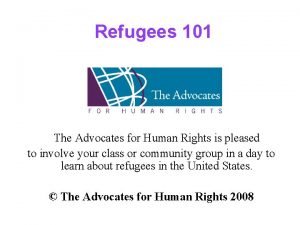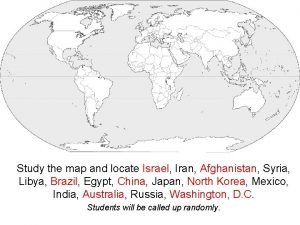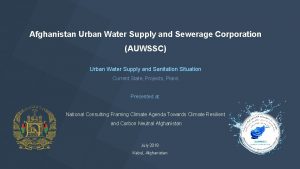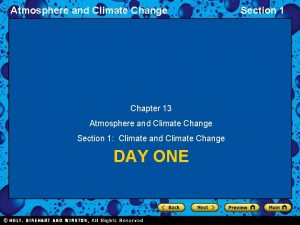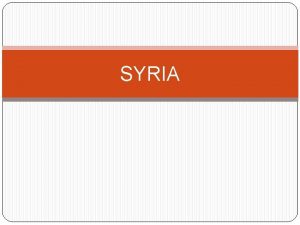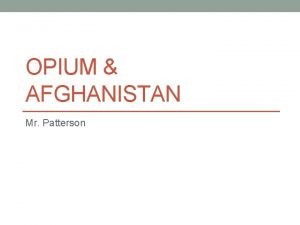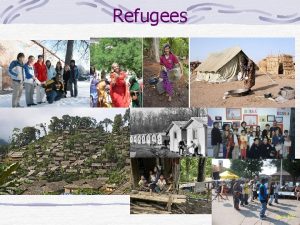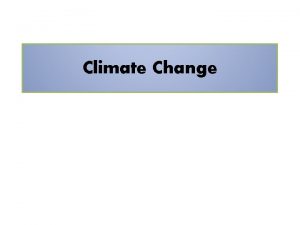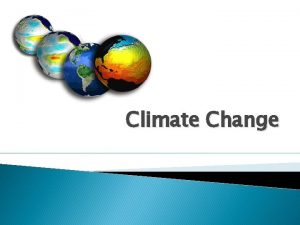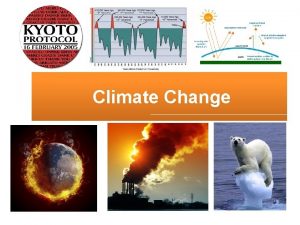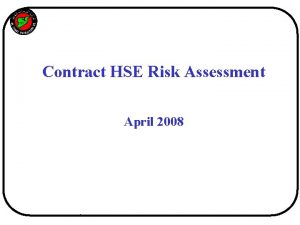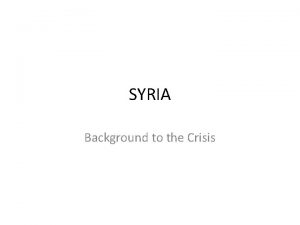Refugees From Syria and Afghanistan to Climate Change
















- Slides: 16

Refugees: From Syria and Afghanistan to Climate Change Quick facts and statistics Ruslan Trad 14 International Youth Conference Krusevo 2016

Quick facts: What you need to know about the Syria crisis Ø Anti-government demonstrations began in March of 2011, part of the Arab Spring. But the peaceful protests quickly escalated after the government's violent crackdown Ø Divisions between secular and Islamist fighters, and between ethnic groups, continue to complicate the politics of the conflict. Ø In October 2015, Russia began launching airstrikes at ISIS targets in Syria. Ø In early February 2016, fighting around Aleppo city intensified and the main route for humanitarian aid was cut off. Ø In August 2016 Turkey began military operation inside Northern Syria

Quick facts: What you need to know about the Syria humanitarian crisis Ø Syria’s civil war is the worst humanitarian crisis of our time. Ø Half the country’s pre-war population — more than 11 million people — have been killed or forced to flee their homes. Ø Families are struggling to survive inside Syria, or make a new home in neighboring countries. Others are risking their lives on the way to Europe, hoping to find acceptance. Ø According to the U. N. , it will take $7. 7 billion to meet the urgent needs Ø The U. N. estimates that 6. 6 million people are internally displaced. Ø Near 200 000 arrested or jailed. Ø Near 5 million became refugees.

Quick facts: Where are they fleeing to? § Many Syrian refugees are living in Jordan and Lebanon § In August 2013, more Syrians escaped into northern Iraq at a newly opened border crossing. § BUT now they are trapped by that country's own insurgent conflict, and Iraq is struggling to meet the needs of Syrian refugees on top of more than 1 million internally displaced Iraqis. § An increasing number of Syrian refugees are fleeing across the border into Turkey, overwhelming urban host communities and creating new cultural tensions. § Hundreds of thousands of refugees are also attempting the dangerous trip across the Mediterranean Sea from Turkey to Greece § Thousands of Syrians flee their country every day. In 2012, there were 100, 000 refugees. By April 2013, there were 800, 000. That doubled to 1. 6 million in less than four months.

How many refugees are children? Ø According to the U. N. , more than half of all Syrian refugees are under the age of 18. Most have been out of school for months, if not years. Ø The youngest are confused and scared by their experiences, lacking the sense of safety and home they need. The older children are forced to grow up too fast, finding work and taking care of their family in desperate circumstances.

Starvation as a weapon of war • Madaya is one example of the depth of the humanitarian crisis facing the region. • According to the UN there at least 400, 000 people living under siege in 15 towns across Syria. • Doctors Without Borders say that 35 people have died of starvation in Madaya alone since the beginning of December 2015, with more than 250 people suffering from severe acute malnutrition.

Napalm and White Phosphorus used as weapon Napalm, Daraya White Phosphorus, Aleppo

Torture • Since 2011, thousands of people have died in custody in Syria’s brutal detention centres. Tens of thousands more have experienced shocking torture. • People have been brutally beaten, raped, given electric shocks and more, often to extract forced “confessions”. • 28, 000 photos of deaths in government custody that were smuggled out of Syria and first came to public attention in January 2014. Ø Syria: Stories Behind Photos of Killed Detainees https: //www. hrw. org/news/2015/12/16/s yria-stories-behind-photos-killeddetainees

Quick facts: What you need to know about the Afghanistan crisis • Afghanistan is a facing a complex humanitarian crisis, stemming from the many challenges that have confronted Afghanistan over the past four decades. • 0. 7 million Afghans need emergency shelter and related support; 1. 7 million lack food security; 3. 1 million health; 2. 9 million nutrition; 1. 7 million protection; and 1. 5 million water, sanitation, and hygiene. • These increasing humanitarian needs in Afghanistan have directly resulted from a dramatic spike in violence across the country, following the withdrawal of most of international forces at the end of 2014. • 2015 was one of the bloodiest years in Afghanistan, during which some 11, 000 innocent Afghans were killed • Taliban in offensive, control of 80% of the biggest province, Helmand.

Quick facts: What you need to know about the Afghanistan humanitarian crisis • Fled their country as a consequence of the long-going Afghan conflict, lasting since 1978. Ever since the Soviet invasion of Afghanistan, refugees have fled into the surrounding states. After the Soviets left, civil war, Taliban conquest, and most recently the Western-led invasion after September 11, 2001 have meant constant warfare in Afghanistan. • Since 2001, more than 5. 7 million former refugees have returned to Afghanistan, but 2. 2 million others remained refugees in 2013. In January 2013 the UN estimated that 547, 550 were internally displaced persons, a 25% increase over the 447, 547 IDPs estimated for January 2012. • Top 3 countries: 2, 500, 000 in Pakistan; 2, 400, 000 in Iran; 300, 000 in UAE

Afghans in Iran • Iran hosts some three million Afghan refugees, many of whom have poured into the country since the United States-led invasion in 2001. • Iranian government of severe maltreatment of Afghans, including summary deportations, physical abuse at the hands of security forces, limited job opportunities outside menial labour, and restricted access to education. • However, the EU had drafted a plan to send 80, 000 Afghan refugees back to their wartorn country and today, the fate of Europe's Afghan refugees remains unclear. • Iran has been recruiting thousands of Afghan refugees to fight in pro-government armed groups in neighbouring Syria

Quick facts: European migrant crisis • Began in 2015, when a rising number of refugees and migrants made the journey to the European Union (EU) to seek asylum and for better living standards, travelling across the Mediterranean Sea or through Southeast Europe. • Top 3 nationalities of the over one million Mediterranean Sea arrivals between January 2015 and March 2016 were Syrian (46. 7%), Afghan (20. 9%) and Iraqi (9. 4%). • Ongoing conflicts and refugee crises in several Asian and African countries, which increased the total number of forcibly displaced people worldwide at the end of 2014 to almost 60 million, the highest level since World War II.

Maps of refugees ways to EU Map 1 Map 2

In Global View

Climate, Environmental refugees • The term climate refugees or climate migrants refers to the subset of environmental migrants forced to move "due to sudden or gradual alterations in the natural environment related to at least one of three impacts of climate change: sea-level rise, extreme weather events, and drought and water scarcity. • The world will have 150 -200 million climate change refugees by 2050.

Contacts: Twitter: @ruslantrad Facebook: @ruslantrad E-mail: ruslantrad@gmail. com Website: www. ruslantrad. com or www. about. me/ruslantrad
 Climate change 2014 mitigation of climate change
Climate change 2014 mitigation of climate change Major sea ports in syria
Major sea ports in syria Where is syria
Where is syria Write an email about syria in your notebook
Write an email about syria in your notebook New vision school syria
New vision school syria Twitter syria
Twitter syria Refugees brian bilston lesson
Refugees brian bilston lesson Internally displaced persons ap human geography definition
Internally displaced persons ap human geography definition Capoeira 4 refugees
Capoeira 4 refugees Refugees
Refugees Capoeira 4 refugees
Capoeira 4 refugees Map of afghanistan and israel
Map of afghanistan and israel Afghanistan urban water supply and sewerage corporation
Afghanistan urban water supply and sewerage corporation Climate change meaning
Climate change meaning Atmosphere
Atmosphere Chapter 13 atmosphere and climate change
Chapter 13 atmosphere and climate change Ministry of higher education (afghanistan)
Ministry of higher education (afghanistan)



